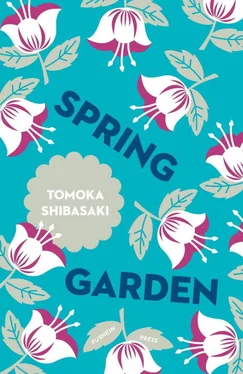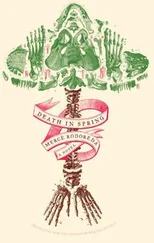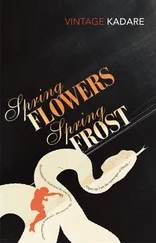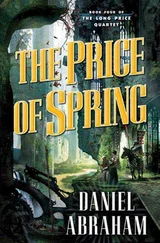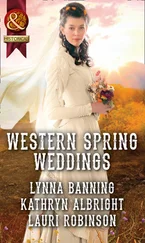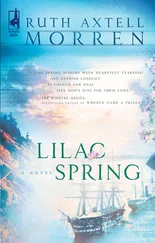Tomoka Shibasaki - Spring Garden
Здесь есть возможность читать онлайн «Tomoka Shibasaki - Spring Garden» весь текст электронной книги совершенно бесплатно (целиком полную версию без сокращений). В некоторых случаях можно слушать аудио, скачать через торрент в формате fb2 и присутствует краткое содержание. Город: London, Год выпуска: 2017, ISBN: 2017, Издательство: Pushkin Press, Жанр: Современная проза, на английском языке. Описание произведения, (предисловие) а так же отзывы посетителей доступны на портале библиотеки ЛибКат.
- Название:Spring Garden
- Автор:
- Издательство:Pushkin Press
- Жанр:
- Год:2017
- Город:London
- ISBN:978-1-78227-273-1
- Рейтинг книги:4 / 5. Голосов: 1
-
Избранное:Добавить в избранное
- Отзывы:
-
Ваша оценка:
- 80
- 1
- 2
- 3
- 4
- 5
Spring Garden: краткое содержание, описание и аннотация
Предлагаем к чтению аннотацию, описание, краткое содержание или предисловие (зависит от того, что написал сам автор книги «Spring Garden»). Если вы не нашли необходимую информацию о книге — напишите в комментариях, мы постараемся отыскать её.
Spring Garden — читать онлайн бесплатно полную книгу (весь текст) целиком
Ниже представлен текст книги, разбитый по страницам. Система сохранения места последней прочитанной страницы, позволяет с удобством читать онлайн бесплатно книгу «Spring Garden», без необходимости каждый раз заново искать на чём Вы остановились. Поставьте закладку, и сможете в любой момент перейти на страницу, на которой закончили чтение.
Интервал:
Закладка:
Nishi had been living in Tokyo for twenty years now, and that had been her fourth move within the city.
When she was younger, she’d lived in an enormous housing estate in Nagoya, close to the industrial belt by the coast. On the northern side of the estate were the municipally run low-income housing blocks, and on the southern side were those run by public corporations. Nishi lived with her parents and younger brother in a block in the middle of the twelve municipal towers, a flat on the third floor of a four-storey building. Outside the window stood rows of four-storey buildings identical to hers. When she went over to the flats of friends at the local school, which had been built at the same time as the estate, each and every one of them was laid out in the same way. She felt a vague yearning for the sorts of houses she saw on TV or in comics, with flights of stairs or hallways in them. Or maybe it wasn’t exactly a yearning—maybe it was more that she was fascinated by them. She wanted to know what it would feel like to live in a house that had stairs in it, and hallways, and wondered too about the kinds of people who would live in those kinds of houses. She even went through a phase of collecting estate agency flyers, and she and her friends would sketch floor plans of their ideal houses and compare their ideas. Sometimes they would decide which room they would have for their own and which would belong to the other members of the family, and then have imaginary conversations based on those scenarios, like a slightly more grown-up version of playing house.
At around the age of fifteen, Nishi’s family moved to Shizuoka Prefecture, not far from Tokyo. The estate this time had only four tower blocks, but their new flat was on the third floor of a four-storey building that was strikingly similar to their previous one—right down to the layout of the rooms—so there wasn’t any need to rethink the positioning of the furniture. The surroundings weren’t much different either. There were factories and warehouses lining the coast, and highways circling the town. Nishi bicycled to school alongside wide dusty roads with lorries coming and going beside her.
Her first encounter with Spring Garden took place in the classroom at lunchtime, in her final year of high school. One of her friends had brought the book to school, though she couldn’t recall who. Books of photographs weren’t popular in the way they would later go on to be, but some authors and actresses popular at the time had praised this one, and it was written up in various culture magazines, making it something of a hit. Going on that, it seemed likely that either Kobayashi, who was in a band, or Nakamura, who was hoping to go to art school, brought the book to school. All Nishi could remember for certain, though, was that someone opened up the book when they were crowded round a desk eating their bento box lunches and one of Takahashi’s cherry tomatoes rolled across its open pages.
The book was a collaboration between Taro Gyushima, an advertising director, and his wife, Kaiko Umamura, a stage actress. About two-thirds of the photos had been taken by Gyushima, the rest by Kaiko.
At that time, several of Taro Gyushima’s TV adverts were the talk of the town, and there would often be interviews with him in magazines. One of his adverts featured actresses whose bodies looked like they were made of porcelain or metal, as if rendered with computer graphics, and another depicted in soap-opera style a highly detailed imaginary world inhabited by a made-up race of people. The adverts really were unlike anything that had come before, and spawned many imitations, but they struck Nishi as too contrived, and she wasn’t a fan.
The photographs that made up Spring Garden , on the other hand, were mostly regular shots, and unlike the commercials, seemed pretty unpretentious. Nishi thought it a really good collection of photos. She liked the innocent look that Kaiko Umamura had about her, and found her handstands, cartwheels and various other odd poses fun. There were even shots of the actress brushing her teeth in the garden, and taking a nap at the low table.
Nishi studied the house where the couple lived in great detail. It was a world apart from the standardized accommodation that she had grown up in. The stained glass and the carved panels above the doors looked custom-made. Even the handrail on the stairs had carvings in it. From watching television and reading comics, Nishi was familiar with things like windows that opened up and down in the Western style instead of side to side like the old Japanese ones, not to mention sunrooms and gardens, but they had never made an appearance in her own life. Best of all, though, she liked the bathroom with its mosaic of tiles in that mysterious pattern. It reminded her of a photo she’d seen of the walls in a block of flats designed by Gaudi. Of course, the bathroom in the sky-blue house wasn’t in quite such good taste, but the thought that there were people who had specifically commissioned a bathroom like that, people who had built it, and people who used that bathtub day in day out, brought a smile to her face.
It was while looking at that book that it occurred to Nishi for the first time that maybe falling in love and getting married and all that stuff might not actually be such a bad thing. In the photographs, Taro Gyushima and Kaiko Umamura seemed totally content. Never before or since had Nishi felt such a strong sense that living with someone you loved could be enjoyable. Six months later, she enrolled in university in Tokyo where, at the suggestion of a girl she sat next to in the matriculation ceremony, she joined the university’s photography club. Spring Garden was on the bookshelf of the clubroom, and Nishi would often take it down and flip through it. She didn’t buy a copy herself because she was spending a lot of money as it was on cameras and film and supplies, and she could look through the book whenever she wanted at the clubroom. When she graduated, and no longer had access to a darkroom, she more or less stopped taking photographs. What Nishi had liked best of all were those moments in the darkroom when she would stand in front of a piece of photographic paper dipped in developer and watch as a scene straight out of the past came floating to the surface. Without those moments, she hadn’t much use for photography at all.
Nishi stayed on in Tokyo after graduating. The first place she lived in by herself was an old flat in the suburbs. The block of flats was built on the same grounds as the landlord’s house, and the window of her first-floor flat had a great view over the trees into the landlord’s large garden. From there, Nishi would watch the seasons changing. The Hall crabapple blossomed, then the zelkova would come into bud, the hydrangea would change colour, the crepe myrtle would shed its flowers for a good three months, and the bright orange flowers of the osmanthus would infuse the garden with its scent, then the leaves would turn and fall. In February, when the weather was still cold, she would catch a whiff of something and discover the vivid pink of the plum tree in bloom, and not long after that the big white magnolia flowers would open. The magnolia and the Hall crabapple she found particularly beautiful.
Up until that point, Nishi had always thought of trees as something that grew by the road or in parks, or else up in the mountains far away, so being able to watch the seasons passing like that from inside her own home came as a real surprise. What was more, the garden wasn’t visible from the road, so they were seasons shared only by the landlord’s family and the people living in her block. The plants in the garden weren’t just objects that grew older with the passing years, she realized. Rather, they grew and they blossomed, and new buds appeared on branches that had dried up during the winter. There was life, plenty of it. Nishi had never had a pet of any kind, and the fact that there were living things that had no connection to her, inhabiting the same space as her, seemed wondrous.
Читать дальшеИнтервал:
Закладка:
Похожие книги на «Spring Garden»
Представляем Вашему вниманию похожие книги на «Spring Garden» списком для выбора. Мы отобрали схожую по названию и смыслу литературу в надежде предоставить читателям больше вариантов отыскать новые, интересные, ещё непрочитанные произведения.
Обсуждение, отзывы о книге «Spring Garden» и просто собственные мнения читателей. Оставьте ваши комментарии, напишите, что Вы думаете о произведении, его смысле или главных героях. Укажите что конкретно понравилось, а что нет, и почему Вы так считаете.
